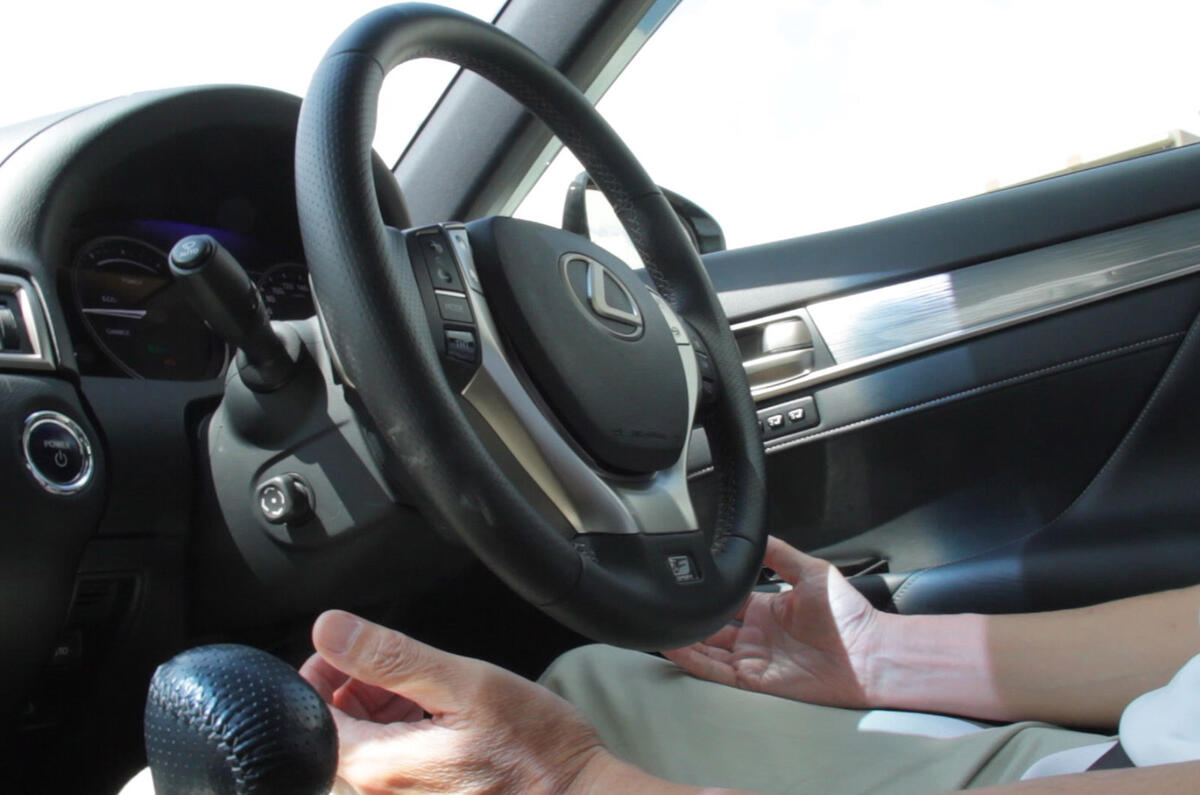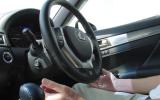Earlier this week Steve Cropley described his experience of automated driving in a Nissan Leaf on urban roads; Toyota is showcasing its own system on motorways, where the company’s customer research suggests drivers will have a strong desire to let the car do the work.
Today I got to ride shotgun with a Toyota driver and experience the system, which the manufacturer is calling ‘Mobility Teammate Concept’. It’s a moderate approach to autonomous driving, with Toyota’s vision being that driver and systems work together in controlling the vehicle.
The white Lexus GS I’m riding in has extra external sensors installed to provide a 360-degree picture of its surroundings and other vehicles, as well as a host of electronic equipment filling the boot.
Our journey starts in ‘manual driving mode’. From the passenger seat I can see that it says as much on the infotainment screen, which is configured to display a special screen of information related to automated driving. It gives the driver details of the surrounding vehicles and roads, warnings about any potential hazards and a display of the steering and pedal inputs being made by the automated driving system.
We head out towards Tokyo’s Shuto Expressway. Once the Lexus goes through a tollgate and up a slip road to the expressway, the system is satisfied that conditions for permitting autonomous driving are fulfilled.
Our driver gets a ‘ready for automated’ prompt on the infotainment screen to inform him that the system is available if he wishes to deploy it. He presses a button on the lower left steering wheel spoke; there’s a chime and then the screen display changes to ‘starting auto drive mode’.
Our driver calmly lifts his hands off the wheel and feet off the pedals. Other drivers in the vicinity are informed that the car has entered its autonomous mode via two blue lights in the rear screen.
As we cruise up the slip road, the indicator stalk flips on automatically and the car edges smoothly on to the expressway, accelerating slightly to find a space well ahead of another car.












































Join the debate
Add your comment
The future